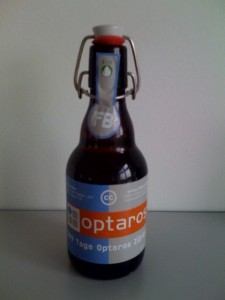Yesterday was day one for the Inbound Marketing Summit (see #ims09 for tweetstream) at Gillette Stadium in Foxborough. If you’ll allow me an early morning extended metaphor, it reminded me an aspect of Boston public transit: the distinction between inbound and outbound, and how they can get confused.
It’s Not [Just] About Your Site: Managing Your Digital Footprint
One of the core aspects of the assembled web is the concept that brands and all companies need to think more broadly about their presence. It isn’t just their web site, or even their network of 10, 20, or 200 sites for various products, services, and brands.
It’s about your digital footprint: the sum total of all the interactions your customers, prospective customers, fans, antagonists, employees, suppliers, and partners have with your content and services throughout the entire Internet.
Continue reading →
Free as in What, Exactly?
Free Software advocates have for a long time worked to draw a distinction between free of cost (“Free as in Beer”) and free of restrictions (“Free as in Speech” or as I prefer “Free as in Freedom”). The challenge stems from the fact that we use, in idiomatic English, the same word “Free” to refer to both concepts, whereas in romance languages (based on latin) there’s a clearer distinction between gratis and libre.

Of course, as r0ml pointed out in a masterful OSCON presentation in 2008, we do have a corresponding word in English to libre – Liberal, or Liberty. Maybe if we’d been calling it “Liberty Software” or “Freedom Software” all these years there’d be less FUD.
Two recent posts crossed my blog reader on the challenge of value versus cost. Now that so many content creators are taking approaches similar to free software via unconferences and creative commons licenses, we need to remember that “free” in these case does not mean without value and does not have to mean without cost.
Continue reading →
Brand Control Revisited: Google Sidewiki
In previous post on the illusory but often sought “brand control on the internet” I talked about Squidoo’s Brands in Public and GetSatisfaction.
Google’s new offering, SideWiki, makes Brands in Public look very web 1.0. Why make consumers come to a third party site just to see all the comments about a brand, when you could put them right next to the brand’s site?
SideWiki, which requires installation of the Google Toolbar, lets you add comments to any web page. You can comment on the page as a whole or on specific highlighted text within the page.
Continue reading →
Cross post Twitter to StatusNet with StatusNet Tools
A few weeks back I created a little plugin that works with Alex King‘s Twitter Tools, using an API it provides to also post your notices to a StatusNet instance (Identi.ca, Twit.tv, etc).
You can find that plugin here: Twitter Tools StatusNet (and should be able to find it soon on wordpress.org).
What I hadn’t realized at the time was just how Twitter Tools itself worked, and what that meant about the StatusNet plugin.
Twitter Tools follows all of your tweets, not just those which you enter via WordPress or generate as new blog post notifications. What this means is that using Twitter Tools in combination with the StatusNet plugin, everything you post on Twitter gets also posted to the StatusNet instance you’ve configured.
Everything you post on Twitter, regardless of it’s source: desktop client, SMS, web client, etc.
This means you’ve got to be careful. If you use Identi.ca, for example, and have your Identi.ca account configured to cross post to Twitter (which is a popular option) you’ll create a loop. You post to Identi.ca, which cross posts to Twitter, where Twitter Tools finds it and (with my plugin in place) cross posts to Identi.ca, which cross posts to Twitter, and so on (repeat until someone tells you your account has gone crazy).
Continue reading →